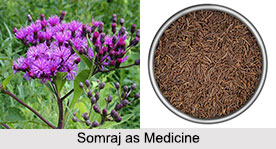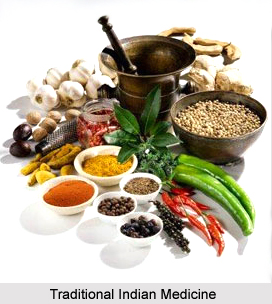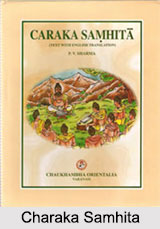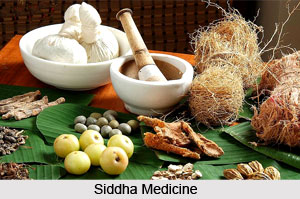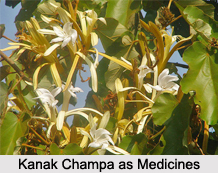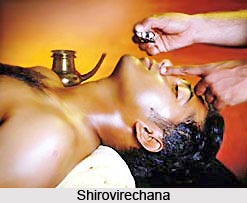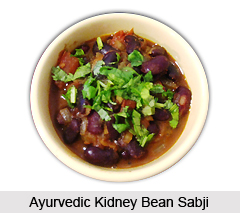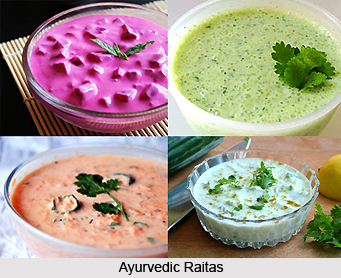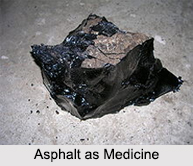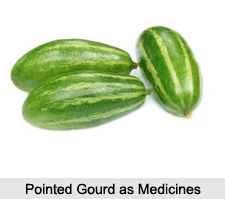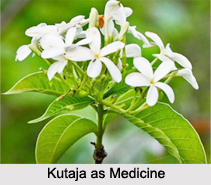 Kutaja is a medicinal herb used to treat chronic dysentery. The botanical name of Kutaja is Holarrhena antidysenterica. The bark of Holarrhena antidysenterica constitutes the principal medicine for dysentery in the Hindu Pharmacopoeia. The seeds called Indrajava are also used in medicine, they being regarded as astringent, febrifuge and useful in fever, dysentery, diarrhoea and intestinal worms.
Kutaja is a medicinal herb used to treat chronic dysentery. The botanical name of Kutaja is Holarrhena antidysenterica. The bark of Holarrhena antidysenterica constitutes the principal medicine for dysentery in the Hindu Pharmacopoeia. The seeds called Indrajava are also used in medicine, they being regarded as astringent, febrifuge and useful in fever, dysentery, diarrhoea and intestinal worms.
Dose of Kutaja in Medicine
The bark of Holarrhena antidysenterica is administered in a variety of ways. The expressed juice of the bark is given with honey. A fluid extract of the bark is given with the addition of ginger and atis. A compound decoction called "Kutajashtaka" is thus prepared. Take kutaja bark, atis, root of Stephania hernandifolia (patha), flowers of Woodfordia Floribunda (dhataki), bark of Symplocos racemosa (lodhra), root of Pavonia Odorata (bala), rind of pomegranate fruit, and the tubers of Cyperus rotundus (mustaka), quarter tola each, water 32 tolas; boil together till reduced to one-fourth.
Kutajaleha: Take kutaja bark 12 seers and a half, water 64 seers , boil down to 16 seers and strain. Boil the strained decoction till reduced to a thick consistence, then add sonchal salt, yavakshara, vit salt, rock salt, long pepper, flowers of Woodfordia floribunda (dhataki), indrajava seeds and cumin seeds, each 16 tolas in fine powder and prepare a confection. Dose should be about a drachm with honey in chronic and acute dysentery.
Pathadya Churna: Take the root of Stephania hernandifolia, fruit of Aegle Marmelos (vilva), plumbago root, long pepper, black pepper, ginger, bark of Eugenia Jambolana, rind of pomegranate fruit, flowers of Woodfordia Floribunda (dhataki), root of Picrorrhiza Kurroa (katuki), atis, tubers of Cyperus rotundus (mustaka), wood of Berberis Asiatica (darvi), chiretta, seeds of Holarrhena antidysenterica (indrajava), one part each, kutaja bark equal in weight to all the above ingredients; powder them finely and mix. Dose is about 1 to 2 scruples to be taken with rice-water and honey.
Another compound powder called Gangadhara Churna is of similar composition to the above, with a few additional substances.
Kutajarisha: Take kutaja root-bark 12 seers and a half, raisins 6 seers and a quarter, flowers of Bassia latifolia (Mahua) and bark of Gmelina arborea (gambhari) 80 tolas each; boil them together in 256 seers of water till reduced to 64 seers and strain. Then add flowers of Woodfordia floribunda (dhataki) 2 seers and a half, treacle 12 seers and a half and let the mixture ferment for a month, after which it will be ready for use. Dose is 1 to 3 ounces.
Oil for external application called Grahanimihira Taila is prepared with sesamum oil, decoction of kutaja bark and a number of astringent and aromatic substances in small quantities.
Pradarari Lauha: Take kutaja bark, 12 seers and a half and prepare a fluid extract as in the preparation called kutajaleha. Then add the following substances in fine powder, namely, gum of Bombax Malabaricum (mocharasa), Indian madder, root of Stephania hernandifolia, (patha), bela fruit, tubers of Cyperus rotundus ( mustaka ), flowers of Woodfordia floribunda (dhataki), atis, prepared talc and iron, each 8 tolas, mix them intimately and prepare a confection. Dose should be about a drachm. This preparation is given in menorrhagia and other discharges from the uterus.
Seeds of Kutaja in Medicine
The seeds of Holarrhena antidysenterica enter into the composition of a good many prescriptions for fever, bowel complaints, piles, intestinal worms, etc. The following are a few illustrations: Take indrajava seeds and the tubers of Cyperus rotundus (mustaka), each 4 tolas, rub them into a paste with water and boil in one seer of water, till the latter is reduced to one-fourth. This boiled emulsion is given in doses of about a half to one ounce with honey. A decoction of Indrajava seeds in usual proportions is used for checking bleeding from Piles. It is given with the addition of ginger.
Laghu gangadhara Churna: Take indrajava seeds, tubers of Cyperus rotundus (mustaka), bela fruit, bark of Symplocos racemosa (lodhra), gum of Bombax Malabaricum (mocharasa) and flowers of Woodfordia floribunda (dhataki) equal parts; powder and mix. Dose should be about a drachm with buttermilk and treacle, in various sorts of bowel complaints.
Related Articles
Ayurveda
Origin of Ayurveda
Ayurveda Medication
Elements of Ayurveda
Concepts of Ayurveda
Ancient Literature of Ayurveda
Sushruta Samhita
Classification of Medicine
Use of Vegetables or Plants as Medicines








